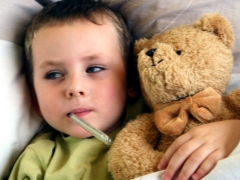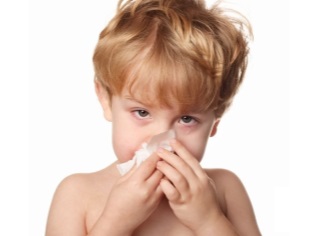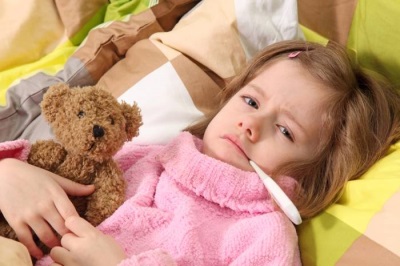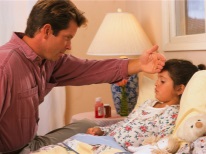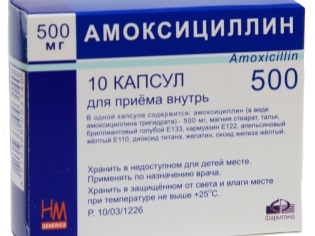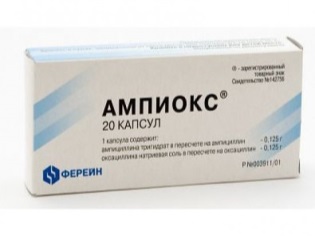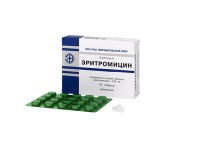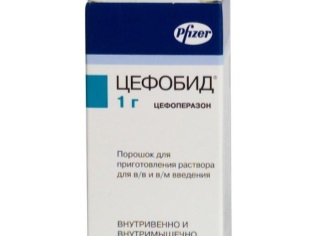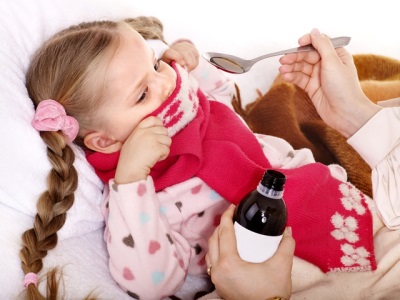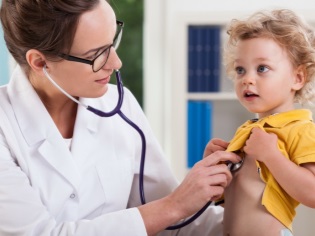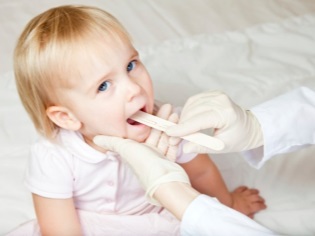How often can you give your child antibiotics?
Antibiotics are powerful drugs that can destroy various types of bacteria, some types of fungi, and conditionally pathogenic microflora.
Their effects on the body can not be overestimated: these drugs save millions of lives, but it must be admitted that they act quite aggressively, and the consequences are serious. Indeed, at the same time as pathogenic bacteria and rods, antibiotics destroy a large part of the beneficial and necessary bacteria that live in the intestines, on the mucous membranes.
Almost all antibacterial agents have an impressive list of contraindications and side effects. Therefore, when parents ask themselves how often antibiotics can be given to a child, it should be remembered that a doctor prescribes antibiotics. Therefore, it is possible to give them to the baby only when the doctor considers it necessary.
To control a child with antibiotics uncontrollably is a crime against his health and well-being.
When do children need antibiotics?
- With bacterial infections. Diseases caused by the ingestion of pathogenic bacteria.
- With viral infections - flu and ARVIif bacterial complications began to develop on the background of a viral malady (sinusitis, angina, tonsillitis, bronchitis, meningitis, etc.)
It is important to remember that all diseases caused by viruses cannot be treated with antibiotics. Antibacterial agents, no matter how modern and expensive they are, are not able to destroy viruses.
Pediatric doctors try not to prescribe antibiotics for mild, even bacterial, infections. As for the use of such a serious and sometimes risky therapy, certain indicators are needed. Antibiotics, for example, will be prescribed crumbs up to 6 months, after three days of non-lowering temperatures above 38 degrees. But a child in 2-3 years at a similar temperature, the doctor may recommend only antipyretic and vitamins.
Let's try to figure out how long you can take antibiotics and how often you can repeat the courses of treatment with them.
Duration of antibiotic treatment
The usual average course of antibiotic treatment is on average from 3 to 14 days. In some situations, the doctor is forced to extend the drug intake, but this is an exceptional, extreme measure.
It is not a question of the whims of the manufacturers who declared such maximum periods of treatment with antibiotics, and not the formal approach of the doctors. It is just that any “harmful” microorganism that an antibiotic is sent to fight with, gradually “gets used” to the effects. And this, according to the findings of scientists, takes about 14 days. Some bacteria die in the first few days after the start of treatment, but there is always some of the most hardy and cunning microorganisms that this antibiotic will not destroy.
With such mutated bacteria will gradually straighten immunity. But the body "remembers". And when next time similar microbes get into it, they will be able to quickly adapt to the already familiar antibiotic.
It is for this reason that it is better to write in a separate notebook, what antibiotics, and when you treated your child.In order for the next disease, when the doctor intends to write you a prescription for antibacterial drugs, you could tell the specialist exactly which drugs are already “familiar” to the bacteria in your baby’s body.
Based on this information, the doctor will be able to choose a tool that effectively cope with the causative agents of a new disease. The same drug is usually not prescribed for small intervals between diseases.
It is impossible to interrupt the designated course. If the pediatrician has prescribed antibiotics to your baby in suspension for 7 days, and on the second day you feel better, do not stop taking the antibiotic.
Remember - the child has become easier, because much of the bacteria in his body has been destroyed. But not all. And the rest are looking forward to when you stop attacking their medicine. Then they calmly, having formed their own defense against the antibiotic, will transfer the disease to a chronic level.
It is necessary to stop taking antibiotics ahead of time and notify the doctor if:
- In a child, 72 hours after the start of antibiotic therapy, there were no noticeable improvements, or his condition worsened. Probably, the reason is that microbes are resistant (used) to this antibiotic, or the drug is chosen erroneously, and the bacteria are insensitive to it. In this case, the pediatrician will prescribe another drug to the child.
- If a child has experienced a severe allergic reaction after the first antibiotic. Usually, it is expressed by itchy skin, rash, swelling, disorders of the digestive system, the temperature may continue to hold, but the situation will become much more complicated.
The sequence of treatment of children with antibiotics
If a specific pathogen is known, the doctor will select a specific antibiotic that can cope with the cause of the disease. But more often physicians find themselves in a situation where the name of the “harmful” bacteria is unknown, and time does not wait. Then appoint broad-spectrum antibiotics. As you know, they are divided into groups.
The very first group - penicillin («Amoxicillin"," Augmentin ","Ampicillin"," Ampioks "," mezlotsillin "and others). It is with such drugs, not the most aggressive, but not the most effective, alas, the doctor usually begins treatment.
They are followed by antibiotics - representatives of the Macrolides group. ("Erythromycin", "Roksitromitsin", "Clarithromycin», «Azithromycin», «Sumamed"," Midekamitsin "," Zener "," Josamycin ", etc.). In view of the prevalence of these drugs, now there is a fairly large number of bacterial strains that are resistant to macrolides.
Only if the drugs of the first two groups did not have the desired effect, the doctor will turn to the third group of antibiotics - “Cephalosporins”. The most popular in the practice of pediatricians are “Zetriaxone”, “Cefix”, “Cefazolin», «Cephalexin, Cefurotoxime, Claforan, Cefobid, etc. These antibiotics extend their effect on most bacteria and fungi known to science. Children are allowed to take cephalosporins 1-3 generations. Antibiotics 4 generations in pediatrics try not to use. Cephalosporin antibiotics can be prescribed to you immediately at the beginning of treatment, if the disease is severe, the baby’s condition is threatened, and the doctor does not have time to go through the antibiotics of other groups.
Topical antibiotics in the form of drops, sprays, ointments, creams are eliminated from the body much faster than their counterparts in the form of tablets, suspensions, injections.
Unfortunately, today's reality is such that doctors in polyclinics do not bother much with the choice of drugs, and quite often prescribe antibiotics unreasonably. For example, with ARVI. Do not think that doctors did not study well in medical schools, it’s just the generally accepted approach, which was completely approved by the Ministry of Health - in any strange situation, prescribe antibiotics! Therefore, our children with you already receive a sufficient amount of unnecessary drugs, it is not necessary to stuff them every time with heavy antibiotics.
When can I repeat the antibiotic treatment?
The well-known children's doctor Yevgeny Komarovsky is sure that the more a child drinks antibiotics or takes them in injections, the more often he will get sick.
Watch the transfer of Dr. Komarovsky here:
Bacteria become insensitive to drugs, and each time it becomes more difficult to cure such a baby.
It is not affected by conventional means, and therefore the doctor, if necessary, to prescribe antibiotic therapy again, will have to look for and prescribe infrequently taken drugs, which, as a rule, are very expensive. Yes, and their impact is often in a clinical setting is not fully tested. And hardly any sane parent is ready to help pharmaceutical corporations to experiment on their own child!
Therefore, treatment with the same antibiotic is not recommended for more than two times in a row with a break of no more than three months. Otherwise, you will have to prescribe a child a new antibiotic.
How many times a day can you give antibiotics to children?
As much as the instructions provide for the use of this particular drug. Parents should remember that each means has its own period of validity. One antibiotic is active for 4 hours, the other is 12 hours. That is why, in order to ensure the continuity of the effect of the drug on the pathogens of the disease, one must strictly follow the daily schedule of single doses.
Most penicillin antibiotics are prescribed to be taken 3-4 times a day. Most macrolides are taken 2-3 times a day. Antibiotics are very convenient, which need to be taken only once a day (such are in the groups of cephalosporins and nitrofurates).
Carefully read the instructions and do not forget that the number of receptions depends on age. For how many years, which drug in which dosages should be taken is an arithmetic task not for parents. The correct answer will be given only by a qualified doctor.
Parents need to know about the time of removal of the antibiotic from the body. For some reason, we believe that the drug, which is faster displayed, in itself is better and more suitable for the child. This is not entirely true. In fact, fast-breeding antibiotics manage to kill fewer pathogens. And drugs that are longer displayed, respectively, cause more significant damage to microbes. Penicillins are completely eliminated from the body within half an hour - an hour. Macrolides - in 6 - 12 hours.
After a couple of hours, cephalosporins begin to be excreted, the rest of the drug is gradually excreted through the intestines within 24 hours, and then through the skin. Tetracycline antibiotics are mostly excreted after about 12 hours. They are not prescribed to children under 8 years of age, because the substance can be “deposited” in the tooth enamel and the bone skeleton.
Aminoglycosides are the most difficult antibiotics for children’s bodies. They are removed for almost 110 hours, bacteria are destroyed more efficiently, but the risk of intoxication increases. Therefore, pediatricians prescribe aminoglycosides in exceptional cases.
- Acceptance of antibiotics should be accompanied by "protective" therapy. So that after the end of the antibiotic treatment course, for another six months not to heal the consequences that these drugs can cause, at the same time as taking antibacterial agents, you must start taking medicines that will protect the baby's body from the devastating effects. For the prevention of dysbiosis, crumbs can be given "Linex", bacteriophages "Bifidumbakterin", "Bifiform“Etc. How many days to take such drugs, the doctor will tell, they usually continue to give the child a few more days after the end of antibiotic treatment.
- Antibiotics can not be replaced by other drugs! There are parents in the world who absolutely refuse to give their children antibiotics. But at the same time, without any doubt, they give immunomodulators to their children in case of illnesses, and then write about successful treatment on the Internet. Do not repeat their "feat"!
Immunomodulators can not defeat the bacteria, they increase the body's defenses.For a child’s own immunity, uncontrolled use of such drugs is very harmful, since immunity gradually becomes “lazy” and loses the ability to resist outside threats without chemical support.
Antibiotics can not be replaced. We can only realize the principle of their actions and the need for the child, if the doctor strongly recommends them. Moreover, there are diseases that cannot be cured without antibiotics, such as sinusitis, purulent tonsillitis, pneumonia, meningitis, sepsis, etc.
Injections or pills?
It is believed that antibiotics, which prick in the ass or in a vein, are more effective in the treatment of disease. This is nothing more than a massive fallacy, which, however, was true 20 years ago.
If the doctor prescribes injections, ask if there is a less painful alternative.
You're on the side of the baby, but he does not want to endure the pain.
If the drug has analogues in the form of a suspension, drops, tablets or capsules, ask if the baby can take them.
The fact is that the antibiotic substance in modern tablets and suspensions has absorbability up to 95%. This is more than enough for the treatment process to proceed at a normal pace and without injections that traumatize the child's psyche.
